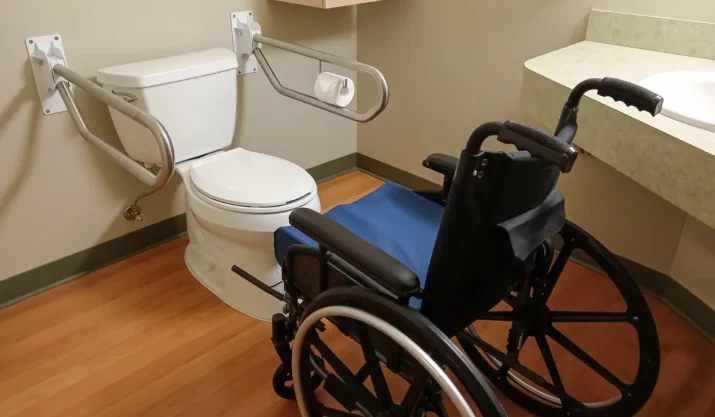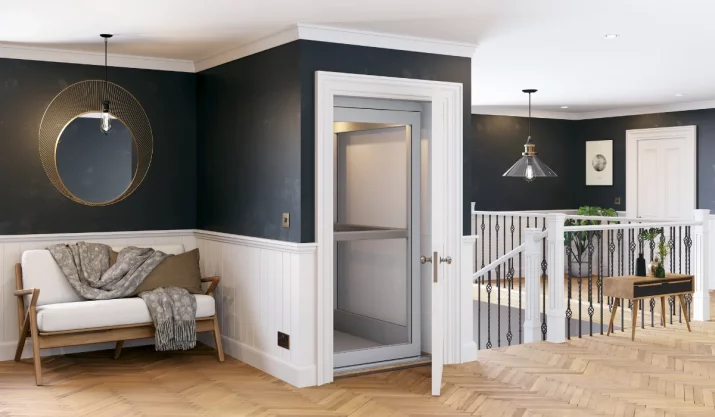Which home mobility lift has the highest weight capacity? A comparison of elevators, stair lifts, and platform lifts

Table of Contents
- Key takeaways
- Stair lifts: weight capacity and functionality
- Vertical platform lifts: a reliable option for wheelchair users
- Home elevators: the highest weight limit and long-term value
- Other lift options: scooter lifts and vehicle lifts
- Key differences in lifting capacity between lift types
- Making the right home mobility lift choice for California living
- FAQs
Choosing the right home lift means balancing comfort, safety, and performance. For people using power wheelchairs, scooters, or mobility devices, lift weight capacity is one of the most critical factors. A lift without enough strength is more than inconvenient. It can put your safety and independence at risk.
This article will compare the weight capacities of three standard home mobility options: stair lifts, vertical platform lifts, and home elevators. Each option has strengths and limits based on your needs, space, and lifestyle.
In California, where homes range from compact Los Angeles bungalows to expansive multi-story residences in San Francisco, knowing each lift’s weight capacity helps you choose the right option for long-term independent living.
Key takeaways
- Stair lifts support 300–350 lbs. on standard straight rail models and up to 600 lbs. on heavy-duty chair lifts.
- Vertical platform lifts (wheelchair lifts) provide 600–750 lbs. of lifting capacity, making them ideal for power wheelchairs and scooters.
- Home elevators offer the highest weight capacity at 750–1,000+ lbs., suitable for multiple passengers and large mobility devices.
- Scooter lifts and vehicle lifts extend accessibility outside the home, carrying 200–450 lbs. for scooters and power chairs.
Stair lifts: weight capacity and functionality

Stair lifts are among the most popular accessibility solutions because they fit directly on your stairway. Standard straight stair lifts with a straight rail typically support 300–350 lbs., which works well for many users with limited mobility. If your home has turns or landings, there are curved stairlifts available. These curved stairlifts are custom-built and offer similar weight ranges.
Brands like Bruno offer heavy-duty stair lifts with up to 600 lbs. capacity. These models include reinforced tracks, larger seats, and safety features like swivel seats and lap belts. They’re a durable choice for users who need higher weight capacity but prefer a compact installation compared to complete home modifications.
For households where multiple family members may benefit, chair lifts remain a versatile choice. Outdoor stair lifts are also available, offering weather-resistant designs to handle California’s coastal air and inland heat. Though lighter than elevators, stair lifts give homeowners a cost-effective way to move between porches or decks.
Vertical platform lifts: a reliable option for wheelchair users

Vertical platform lifts, also known as wheelchair lifts, are designed for power wheelchair and scooter users. Unlike stair lifts, which carry only the rider, these lifts transport both the person and their mobility device safely. Lifting capacity typically ranges from 500–750 lbs., making them one of the most heavy-duty options short of a full elevator.
Manufacturers like Bruno and Harmar build vertical platform lifts with strong, high-quality materials that withstand daily use. These lifts are especially popular for wheelchair users who need direct access from the driveway to the main floor, eliminating the need for ramps that can be long and difficult to maintain.
Platform lifts can be installed indoors or outdoors, and many include easy-to-use controls, safety gates, and backup power.
Professional installers fit the lift seamlessly into your home and ensure it remains reliable with your mobility device.
Home elevators: the highest weight limit and long-term value

For families planning permanent home modifications, home elevators offer the highest weight capacity of all residential mobility solutions. Standard models start at 750–1,000 lbs., with luxury or custom elevators supporting even more. The increased weight capacity of luxury or custom elevators makes them ideal for multiple passengers, heavy power chairs, or larger scooters.
Home elevators also help with daily tasks beyond mobility. You can easily carry groceries, laundry, or luggage between floors.
In multi-level California homes, they often become part of a long-term plan for aging in place while maintaining quality of life.
Because they cost more and require construction, home elevators need more planning than stair lifts or platform lifts. Many homeowners see them as a lasting investment that improves accessibility for years.
Providers like Bruno and Harmar back their elevators with comprehensive warranty coverage, ensuring durability and long-term safety features.
Other lift options: scooter lifts and vehicle lifts
For people who rely on a scooter or power wheelchair outside the home, transportation solutions are just as important as indoor mobility. You can install a scooter lift inside a garage or even on a porch to help store or move the device between levels. Vehicle lifts are another option, designed to load scooters and power chairs into vans, SUVs, or trucks for safe travel.
While they don’t replace stair lifts or elevators, scooter and vehicle lifts extend independence by making travel with mobility devices easier. Like home lifts, they also come in heavy-duty models with built-in safety features.
Key differences in lifting capacity between lift types
When comparing weight capacity, the differences are apparent:
| Lift type | Typical weight capacity | Best for |
|---|---|---|
| Stair lifts | 300–350 lbs. (standard) Up to 600 lbs. (heavy-duty) | Users with limited mobility who don’t need to carry a mobility device |
| Vertical platform lifts | 500–750 lbs. | Wheelchair users, scooters, and power chairs |
| Home elevators | 750–1,000+ lbs. | Multiple passengers, large mobility devices, and long-term accessibility |
| Scooter lifts & vehicle lifts | 200–450 lbs. depending on model | Transporting scooters and power chairs in or out of the home |
If you use a scooter or power wheelchair, a wheelchair lift, scooter lift, or home elevator will likely be the best choice. For those with limited mobility who don’t require transporting a device, stair lifts remain a practical, cost-effective solution.
California providers can check your stairway, home layout, and needs to recommend the best lift for function, strength, and ease of use.
Making the right home mobility lift choice for California living
Stair lifts offer simplicity, vertical platform lifts handle wheelchairs and scooters with higher capacity, and home elevators provide the most strength and long-term value.
California Mobility helps families choose the best lift for their home, with professional installation and trusted brands like Bruno and Harmar.
Ready to improve your accessibility and safety? Contact us today or request a free quote from our team.






